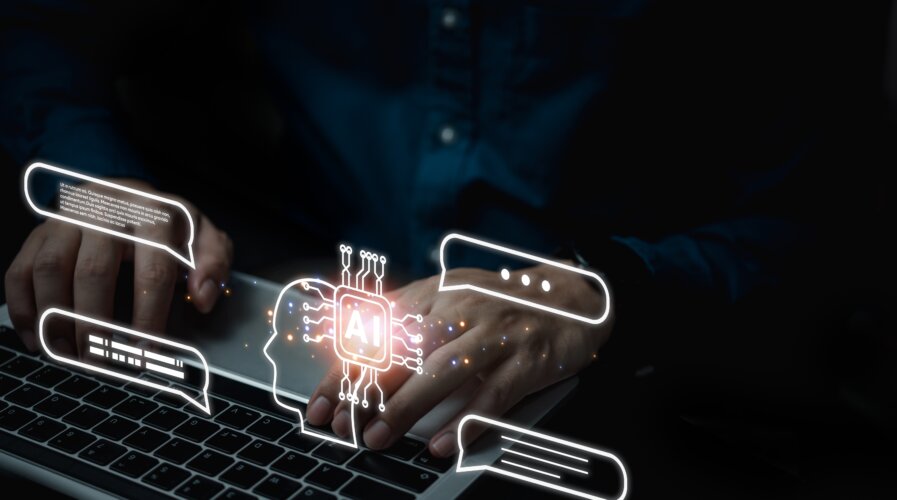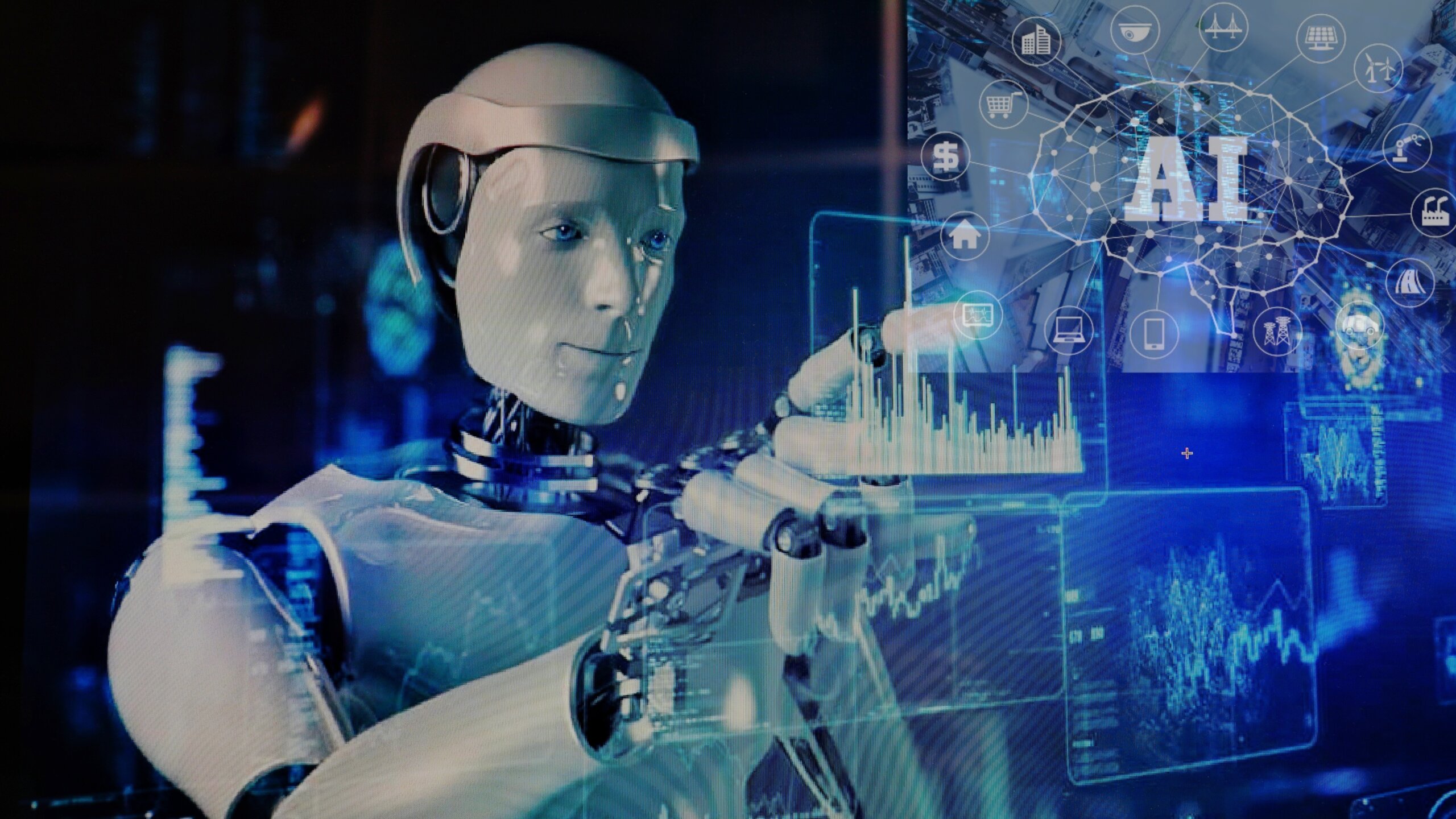
Tomorrow’s tech, today: How generative AI and RPA are shaping our future
|
Getting your Trinity Audio player ready... |
The ever-evolving landscape of automation technology continues to unveil powerful tools, revolutionizing business operations. Generative AI and Robotic Process Automation (RPA) are prime examples of such transformative technology. Combined with RPA, it promises to redefine how organizations automate their processes.
One company that is at the forefront of this innovative fusion is Cyclone Robotics, which is leading the charge towards hyper-automation, an all-encompassing automation solution. While RPA simplifies repetitive, rule-based tasks with unerring accuracy, generative AI elevates automation with its adaptability, creativity, and speed.
Tech Wire Asia recently interviewed Wee Choong Hew, Head of the ASEAN Team at Cyclone Robotics, to explore how generative AI complements RPA, thus unlocking the potential for intelligent, efficient, and scalable business automation solutions.
Transforming business landscapes with generative AI and RPA
The high-tech sector is expected to benefit heavily from both generative AI and RPA. In fact, in this sector, Hew believes the combination can revolutionize businesses by:
- Boosting overall efficiency: The combination of RPA automating repetitive manual tasks, and generative AI deploying machine learning and predictive analytics, can save time and resources while reducing errors.
- Enhancing decision-making: By analyzing vast amounts of data, generative AI can provide insights to help businesses make superior decisions. Subsequently, RPA can execute these decisions quickly and efficiently, creating a seamless loop of process automation.
- Streamlining customer service: Generative AI analyzes customer data to identify patterns and offer personalized recommendations. RPA can then action what’s optimized for the next stage, ensuring timely and precise execution. This significantly enhances the overall customer experience.
- Improving product development: By analyzing customer data and market trends, generative AI can identify opportunities for new product development. RPA can then automate product design, testing, and release tasks.
“In general, the collaboration between generative AI and RPA holds immense potential for streamlining and accelerating business operations,” said Hew. “By combining the capabilities of generative AI and RPA, businesses can automate routine, repetitive and time-consuming tasks.”

Wee Choong Hew, Head of the ASEAN Team at Cyclone Robotics
Hew stated that generative AI can be used to generate automated workflows and process models, which can then be integrated with RPA to automate the entire process. This saves time and eliminates the chances of human errors that may occur during manual data entry and processing.
By leveraging AI-powered predictive analytics, businesses can make informed decisions in real-time, further increasing their operational efficiency.
“RPA can automate tasks such as customer service, data entry, and financial reporting, which can help organizations save time and reduce the need for human intervention. This allows employees to focus on tasks that require human creativity and ingenuity,” he added.
Hew suggested that the combination of generative AI and RPA could lead to potential future use cases in fraud detection, customer service, financial services, and healthcare. For instance, generative AI could analyze customer data and generate personalized responses to inquiries, while RPA could automate the process of responding to these requests in real-time.
Content creation is another area significantly impacted by the integration of generative AI and RPA. Generative AI, with the aid of Large Language Models (LLMs), has made content creation faster, more diverse, and easier, leading to increased production capacity while maintaining high quality and consistency. This improves operational efficiencies and provides businesses with substantial cost savings.
Hew further mentioned that generative AI solutions with LLMs could revolutionize social media management by analyzing social media data, generating insights, and recommending actions. This can help automate social media management, saving time, and increasing engagement.
In addition, generative AI solutions with LLMs can analyze customer inquiries and generate responses swiftly and with higher quality. This can enhance customer service, reduce response time, and boost satisfaction.
On legal and compliance, generative AI solutions with LLMs can automate the creation of legal and compliance documents and perform compliance checks. This can lead to more accurate and efficient reporting, fewer risks of compliance violations, and reduced legal costs.
The state of robotic adoption in Southeast Asia: An in-depth analysis
On how beneficial RPA is for businesses, especially on the state of robotic adoption in the manufacturing sector in Southeast Asia (SEA), Hew said that the adoption of robotics in the manufacturing sector in SEA is gradually increasing.
“In recent years, countries such as Singapore, Malaysia, and Thailand have shown a strong interest in implementing advanced automation technologies, including robotics, in their manufacturing processes. This is due to the high demand for manufacturing activities in these countries and the need for increased productivity and efficiency,” he explained.
According to the International Federation of Robotics (IFR) report, Thailand is the region’s largest robot market, with 7,054 installations in 2019, followed by Singapore with 4,533 installations. Conversely, Malaysia has seen slower growth, with approximately 1,616 installations, but still shows a strong interest in robotics.
In general, industries such as automotive, electronics, and food and beverage are leading the way in the adoption of robotics in Southeast Asia.
“However, the adoption of robotics, including RPA in the manufacturing sector in Southeast Asia is still in its early stages, and there is still a lot of potential for growth and development in the years to come,” he emphasized.
The cost factor: Assessing the investment in generative AI and RPA
Hew also pointed out that the costs associated with implementing generative AI and RPA solutions can vary widely, depending on several factors.
- Firstly, the cost depends on the complexity of the tasks that need to be automated. More complex tasks may require more advanced generative AI and RPA technologies, which can be more expensive.
- Secondly, the cost depends on the extent of the automation required. If a business needs to automate many tasks, it may need to invest in several different generative AI and RPA solutions, which can significantly increase costs.
- Thirdly, the cost also depends on the level of customization needed for the solutions. Customized solutions can be more expensive than off-the-shelf products, requiring more time and resources to develop.
- Fourthly, ongoing maintenance and support costs should also be considered in the total cost of ownership of generative AI and RPA solutions. These can vary depending on the solutions’ complexity, the organization’s size, and the level of support needed.
“Overall, the cost of implementing generative AI and RPA solutions in an organization can range from hundreds of thousands to millions of dollars, and there may be additional costs associated with training, customization, and ongoing support,” he said. However, Hew believes that the potential benefits of increased productivity, improved operational efficiency, and reduced costs may outweigh this initial investment in the long run.
Hew suggested that to manage generative AI and RPA solutions within a company effectively, one must possess skills in the following areas:
- Technical knowledge: An understanding of the underlying technology and programming languages used in generative AI and RPA is necessary to implement and manage these solutions effectively.
- Analytical skills: The ability to analyze data and identify trends and patterns that can help optimize and improve the performance of AI and RPA solutions.
- Project management skills: The ability to manage projects, allocate resources and prioritize tasks to ensure that the AI and RPA solutions are implemented successfully and within budget.
- Communication skills: The ability to communicate effectively with technical and non-technical stakeholders is essential to ensure that everyone is on the same page and understands the benefits and limitations of the implemented solutions.
- Problem-solving skills: The ability to identify and troubleshoot issues with AI and RPA solutions as they arise, and to develop effective solutions to overcome these challenges.
Such skills are not unusual and are becoming increasingly important in the digitalized world. Hew stated, “We may explore more new skills required as we see more use cases from these two technologies’ integrations.”
The future of IT organizations amidst evolving automation technologies
As AI tools and RPA evolve, IT organizations can expect significant changes in their structure and operations. A critical shift will be the need for new skill sets; the rise of AI and RPA will necessitate the recruitment of more employees possessing specialized knowledge in areas like machine learning, data science, and automation technologies.

Source – Shutterstock
Moreover, the implementation of AI and RPA solutions will call for increased cross-functional collaboration. IT teams, business units, and other stakeholders must work closely to ensure the developed solutions meet the business’s requirements. There will likely be a push towards creating fusion teams to cater to this need for collaboration.
Simultaneously, the deployment of AI and RPA solutions will lead to streamlined processes. By automating many manual procedures, these solutions will free up IT organizations to concentrate on strategic initiatives such as innovation and digital transformation.
Additionally, the agility of IT organizations will be enhanced. The use of AI and RPA solutions will facilitate the ability to respond quickly to changing business needs and market conditions.
So, it’s clear that as these tools evolve, IT organizations should anticipate significant changes in their structure and operations. This evolution will demand that organizations remain flexible and agile, ready to invest in the right people and technology to thrive in the future.
“Regardless of whether the technology is old or new, organizations should focus on solving business pain points, potentially disrupting existing business or creating new opportunities and perspectives. These considerations will always be fundamental to any business,” he concluded.
READ MORE
- Safer Automation: How Sophic and Firmus Succeeded in Malaysia with MDEC’s Support
- Privilege granted, not gained: Intelligent authorization for enhanced infrastructure productivity
- Low-Code produces the Proof-of-Possibilities
- New Wearables Enable Staff to Work Faster and Safer
- Experts weigh in on Oracle’s departure from adland


